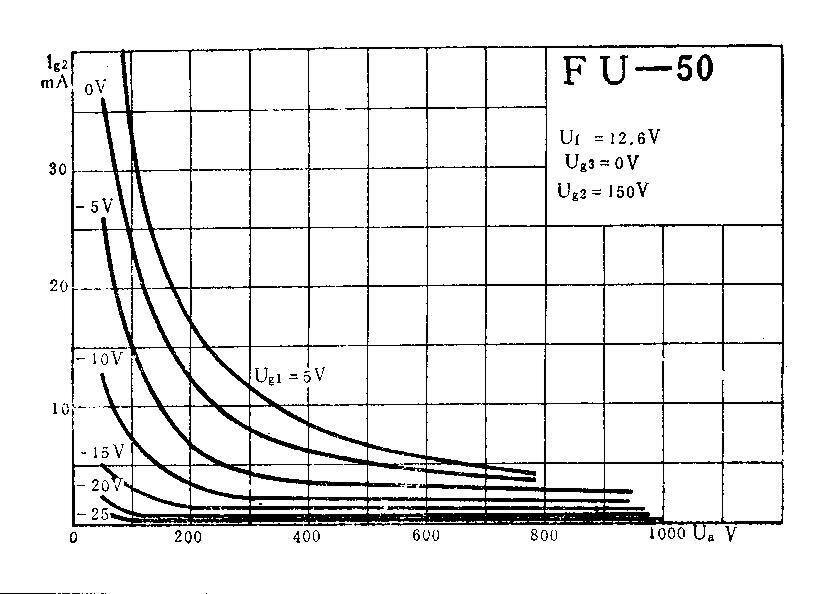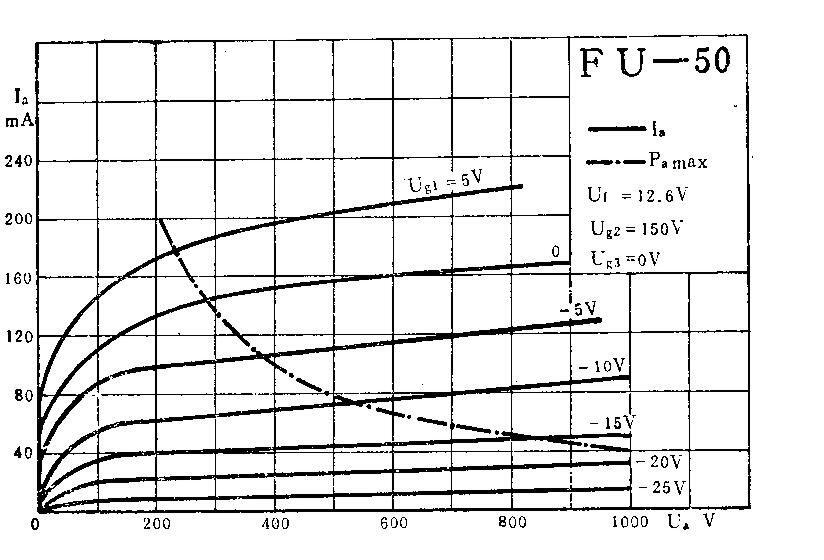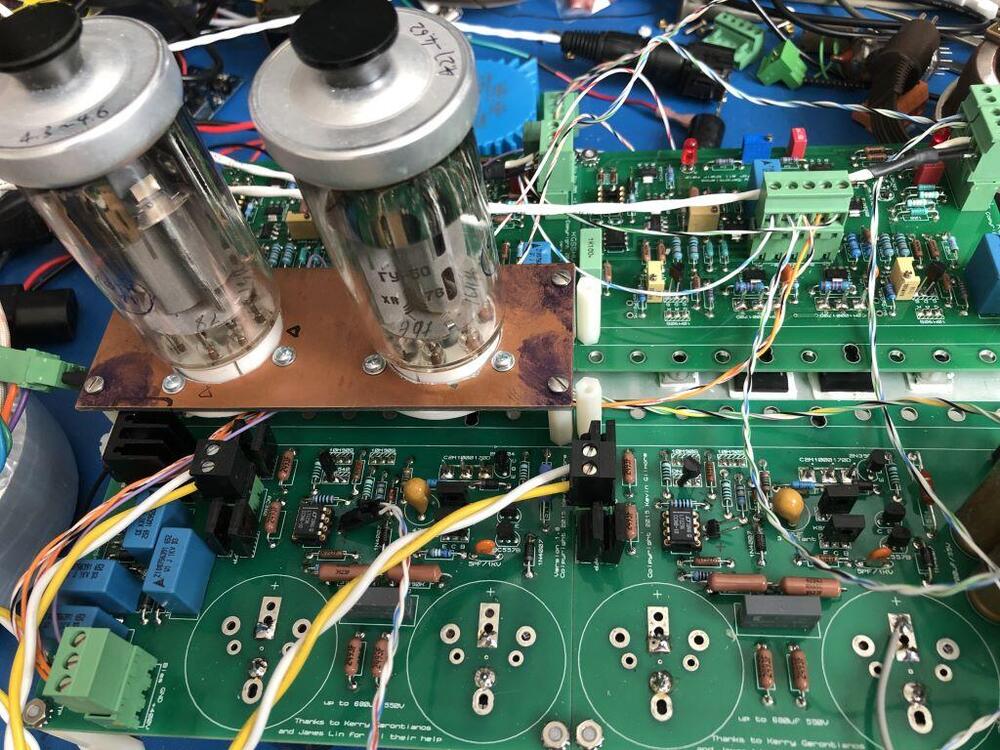Leaderboard
Popular Content
Showing content with the highest reputation on 04/04/2022 in Posts
-
The saga of messing with my 2nd Carbon build continues. Since the circuit is very close to the Grounded Grid, I'd like to give it a try. Being hesitant to spend big bucks on a nice quad EL34, I have been on the lookouts for a cheaper substitute. The curve of a pentode looks a lot like that of a SiC FET. I need a pentode with the following properties: The plate curve should have low kinks or no kinks at the low Va range. The lower the 'knee' the better. Low Ig2. Ig2 should be much smaller than Ia (20mA), ideally 1mA or less under the operational Va range such that Ig2 doesn't interfere with cathode drive/ cathode degeneration. The amount of negative bias needed to get 20mA at 400V should be reasonably easy to handle. High rated Va(max) and Pa(max) for using a higher supply voltage and/or idle current in the future. That means I may need to look into transmitting tubes. And the candidate is... (drum roll please) the FU-50/GU-50! The linearity looks pretty good at around Ia=20mA, from Va=100V all the way to 1kV! The bias voltage is between -20V and -25V, right around what Carbon has. The Ig2 is really low and changes very little from Va=100V to 1kV. More importantly, the FU-50/GU-50 are relatively inexpensive and plentiful. A lot of them were made in the USSR and China during the cold war era. I read somewhere that those were designed for the comm gear used in the tanks and had very little success in commercial applications. I paid less than $3 a pop from Ukraine about 15 year ago. The going price for a NOS tube should be close to a SiC FET today. Well, any tube not designed for audio can be cheap these days. However, that wouldn't stop people from chasing after the Telefunken LS50 and the east-Germany SRS-552s, I guess 😉 Adapting those to the Carbon is surprisingly easy. I removed the SiC FETs and the 20k bias resistor, replaced the two 175k resistors with a 100V and a 130V 3W zener diode for G2 supply. The Ig2 is really small and the two tubes can share one set of the zener diodes. They drop 230V from GND and set Vg2 right at 150V, with about 22V left for the PZTA42 and the offset pot. The heaters are powered by a 12.6V filament trans with one side tied to B-. I could have tied the CT but there was very little hum to worry about. Guess what, the GU-50s work right out of the box. I didn't even need to adjust the balance and offset! The measured performance is pretty decent: Although the distortion is low, the FFT does show some higher order 'pentode nastiness'. I guess the reasons being The pentode is not super linear to begin with. The transconductance of the GU50 is about 1/10th of the SiC FET. The PZT42 has to work much harder and the global NFB is less effective. Something else worth looking into I'm not yet able to seriously listen to the sound, because I couldn't find another pair of tube sockets in my stash for the second channel 😂. If you want to know how it sounds, try it! The GU50 with 400V PSU comfortably beats the KGST (below) on the frequency response and the output swing: Next to try is to use the pentodes on the KGST, or should I call it KGSP then?9 points
-
^ That's my entire virtual record bag, archived. Normally only the changed files need to be copied, but part of the process of rebuilding my virtual DJ infrastructure changed the mtime on every single track in it. This M1 MBP doesn't have ethernet of course, so that transfer had to happen over WiFi. Related, I'm eyeing one of those CalDigit TB docks. Probability of me finally returning to the airwaves this coming Friday increasing.2 points
-
Or - how big is your organ? Very big - in Atlantic City The list of stops is bewildering in its own right http://www.organrecitals.com/acch.php It is apparently the largest pipe organ in the world, physically the largest single instrument, and the loudest musical instrument ever constructed.2 points
-
2 points
-
In lighter news, Sanctioned Russian oligarchs break down in tears over their inability to book private jets, reports say.2 points
-
I dialled back the bias from 20mA to 17.2mA, installed a 562k resistor in parallel over one of the 175k resistors and achieved 24.8V bias voltage across the 20k resistor and Vce of the PZTA42 is 13.25V. Thanks to simmocon on this for the ground work for the 400V Carbon! The offsets on troubled board (after dialling down the bias) drift slowly down from around 5V. Still not sure why at 20mA bias I was getting no drift, I’ll leave that a mystery.1 point
-
1 point
-
1 point
-
Vivaldi, Leclair & Locatelli : Violin Concertos Théotime Langlois de SwarteLes Ombres 2022 https://album.link/i/16061670521 point
-
After having double checked that the input voltages to the 78/7912 are within limits (max 35V)... measured 31V, I added the remaining 7812 and 7912 to generate the supply voltages for the protection circuit. And modified my prototype so that it no longer needs a individual power supply. The audio 50Hz humm also went away after I no longer crossed the audio input lines with the 230V power cord!!1 point
-
Hi All, sorry to be new in this forum and I do not want to enhance the noise floor and reduce the signal-to-noise ratio (SNR), here! But with my "noise" I want to oppose a bit other “newcomers” here who are seeing only negative arguments against the X9k and I try to counterpart their "con noise" a bit by some more optimistic "pro noise" ;-). And although being new here at the forum, I’m not new in headphones in general, so being quite experienced I think, hopefully not contributing pink noise, only, here. I fully respect Spritzer's review and also his opinion and conclusion. Because it is a thorough review giving valuable insights into the pros and cons of the X9k from his point-of-view. I also want to thank Spritzer for serving the community with thorough insights and an excellent review. That's great and many headphone fans have waited for his expert's review. Thanks a lot! I want to contribute a positive signal on Stax SR-X9k. And I must admit that I adore the new X9k. I thoroughly compared it to my SR009 (yes, I have to admit that I like the tonality and signature of the SR009 from 2011. But I also adore the dark timbre of the SR007Mk1, so both are great for me. Quite different but great). And when I compared it to my SR009, I must say that the X9k is a full level above. An incredible achievement, imho. It is more detailed than SR009 with respect to frequency, timing (transients) and spatial resolution. But even if it sounds contradictory, while being so ultra-precise it is extremely pleasant, fresh and ethereal, airy. Thus it never jangles my nerves. And it is NOT “bright in that sense” (what many people dislike with some Stax headphones). Yes, it is not dark like a SR007Mk1 but the "brightness" of the X9k is not bright in a negative sense, it is more “transparent” and airy than “bright” (not bright, not at all sibilant but very pleasantly transparent, I would call it). And from my personal feeling (imho!) the space is great, too, well-spanned and very precise (accurately resolved). I cannot agree with the critical arguments on spatial properties by Spritzer. So, personally I did not detect them, so would not confirm. But of course, that's only me, maybe I just did not hear this issue. I believe that finally (2011 came the SR-009. And the SR-009 was no real step up. A bit differently tuned but not really stepping up), the X9k really raises the bar in the headphone scene, not only related to Stax but also to the competing headphones, i.e., planars like Susvara, TC or whatever. So, time will tell, how the X9k will be anticipated in future. Maybe it becomes a new legend. Or maybe not. I personally see great chances for that :-).1 point
-
Tossed together an LTSpice model for this (warning: I'm a Spice newbie/hack) CFP spice.zip1 point
-
0 points
-
0 points














